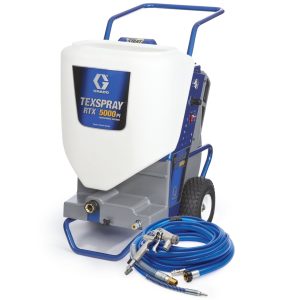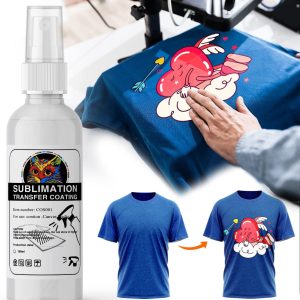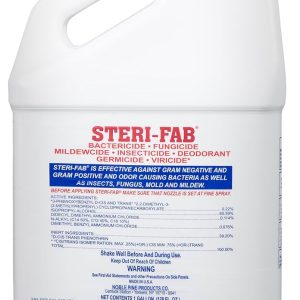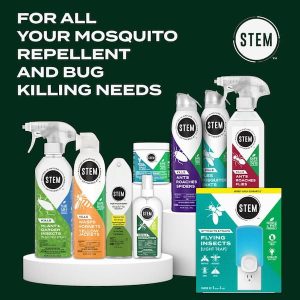
When it comes to achieving that iconic, glossy, deep red finish that turns heads and stops traffic, nothing quite compares to the stunning visual impact of candy apple red spray paint. This legendary automotive color has transcended its hot rod origins to become one of the most sought-after finishes in custom painting, DIY projects, and professional restoration work. The distinctive translucent quality of candy apple red creates a depth and richness that solid colors simply cannot match, making it the go-to choice for anyone looking to make a bold statement with their project.
The history of candy apple red dates back to the 1950s custom car culture, where pioneering painters discovered that applying transparent red tints over metallic base coats created an unprecedented depth and brilliance. This innovative technique revolutionized automotive finishing and established candy apple red as the quintessential hot rod color. Today, modern formulations have made this once-exclusive finish accessible to hobbyists and professionals alike through convenient aerosol spray paint formats.
Whether you’re restoring a classic motorcycle, customizing automotive parts, refinishing furniture, or tackling creative craft projects, understanding the unique characteristics and application requirements of candy apple red spray paint will help you achieve professional-quality results that capture that signature deep, glossy, multidimensional finish that has made this color an enduring icon in the world of custom finishing.
What Makes Candy Apple Red Spray Paint Unique?
Candy apple red spray paint differs fundamentally from standard solid red paints in both its composition and visual characteristics. Unlike opaque paints that completely cover the underlying surface, candy colors are translucent or semi-transparent, containing special dyes and pigments suspended in a clear base. This transparency is what creates the signature “candy” effect, as light penetrates through the colored layer, reflects off the metallic or light-colored base coat beneath, and travels back through the candy layer to create extraordinary depth and brilliance. The result is a finish that appears to glow from within, with color intensity that shifts and changes depending on the viewing angle and lighting conditions.
The chemistry behind candy finishes involves carefully balanced formulations of transparent organic pigments, resins, and solvents that maintain clarity while delivering rich color saturation. Traditional candy apple red formulations use aniline dyes that provide exceptional transparency and vibrant red hues, though modern versions often incorporate more lightfast pigments that offer improved durability and UV resistance. The metallic base coat, typically silver or gold, plays a crucial role in determining the final appearance, with silver bases producing a cooler, more purple-toned red, while gold bases create warmer, more orange-influenced reds. Professional painters often experiment with different base coat colors and candy layer thicknesses to achieve custom variations ranging from light cherry reds to deep, almost burgundy tones.
Key Characteristics of Candy Apple Red Finishes
- Translucent layering system requiring a reflective base coat for proper color development
- Multidimensional appearance with depth that changes under different lighting conditions
- High gloss potential when properly applied and clear coated
- Color intensity control through the number of candy coats applied
- Metallic enhancement that creates sparkling, jewel-like qualities
- Temperature sensitivity during application affecting flow and leveling
- UV exposure considerations as candy finishes can fade without proper protection
Top Brands and Products for Candy Apple Red Spray Paint
The market offers numerous candy apple red spray paint options, ranging from affordable hardware store brands to premium automotive-grade formulations. Selecting the right product depends on your project requirements, budget, skill level, and desired finish quality. Professional-grade candy paints typically offer superior color saturation, better flow characteristics, and improved durability compared to budget alternatives, but they also require more technical skill and proper environmental controls during application. For beginners tackling smaller projects, pre-mixed candy systems that include compatible base coats and clear coats in aerosol formats provide the most straightforward path to successful results.
Dupli-Color offers one of the most accessible candy apple red spray paint systems through their Custom Wrap line, which provides good color depth and reasonable durability for automotive and hobby applications. Their formulation works well over their metallic silver base coat and dries relatively quickly, making it suitable for multi-coat applications within shorter timeframes. Rust-Oleum Automotive produces a candy apple red in their specialty enamel line that delivers solid results for wheels, trim pieces, and smaller automotive components, with excellent adhesion properties when properly prepared.
For premium results, House of Kolor remains the gold standard in candy finishes, with their KK04 Kandy Apple Red being the benchmark against which all others are measured, offering unmatched color intensity, flow characteristics, and professional-grade durability when applied according to their technical specifications.
Comparison Table: Popular Candy Apple Red Spray Paint Brands
| Brand | Product Line | Coverage | Dry Time | Skill Level | Price Range |
|---|---|---|---|---|---|
| Dupli-Color | Custom Wrap Candy | 15-20 sq ft | 30 min touch | Intermediate | $8-12/can |
| Rust-Oleum | Automotive Candy | 12-15 sq ft | 20 min touch | Beginner | $7-10/can |
| Krylon | ColorMaster Candy | 10-12 sq ft | 15 min touch | Beginner | $6-9/can |
| House of Kolor | Kandy Koncentrate | Professional mix | Variable | Advanced | $30-45/can |
| Createx | Candy2O Water-Based | 20-25 sq ft | 45 min touch | Intermediate | $15-20/bottle |
| Speedokote | SMR Candy Series | 18-22 sq ft | 25 min touch | Advanced | $12-18/can |
Essential Application Techniques for Perfect Results
Achieving that flawless, deep candy apple red finish requires meticulous attention to surface preparation, environmental conditions, and application technique. The translucent nature of candy paints means that every imperfection in the underlying surface will be magnified and visible in the final finish, making thorough preparation absolutely critical to success. Unlike opaque paints that can hide minor surface flaws, candy finishes are unforgiving and will reveal scratches, orange peel texture, dust particles, and color variations in the base coat. Professional painters often spend more time preparing surfaces than actually applying the candy layers, understanding that the preparation phase determines the final quality more than any other factor in the process.
The application environment must be carefully controlled to prevent contamination and ensure proper paint flow and leveling. Ideal conditions include temperatures between 65-85°F with relative humidity below 50%, adequate ventilation without excessive airflow that could disturb the wet paint, and a clean, dust-free workspace. Before beginning, ensure all surfaces are perfectly smooth through progressive sanding with 320, 400, and 600-grit sandpaper, followed by thorough cleaning with wax and grease remover to eliminate any contaminants that could cause adhesion problems or surface defects.
The base coat application is crucial, requiring even, consistent coverage without any light or dark spots, as variations in the metallic base will translate directly into color variations in the candy layer, creating an unprofessional, blotchy appearance that cannot be corrected without complete refinishing.
Step-by-Step Application Process
Surface Preparation Phase: Begin by thoroughly cleaning the surface with a quality degreaser, removing all oil, wax, silicone, and contaminants that could interfere with adhesion. Sand the existing finish with 320-grit sandpaper to create mechanical adhesion, ensuring complete coverage of all areas. Progress through finer grits (400, then 600) until achieving a perfectly smooth, uniform surface. Clean again with tack cloths to remove all sanding dust, then apply a high-quality primer if working on bare substrate, allowing proper cure time according to manufacturer specifications. The primer must be sanded smooth with 600-grit paper before proceeding, as any texture will telegraph through the final finish.
Base Coat Application: Apply your metallic base coat in 2-3 medium-wet coats, maintaining consistent overlap and spray distance throughout. The base coat must provide completely uniform coverage without any light or dark areas, as these variations will be amplified by the translucent candy layer. Allow each coat to flash off (become dull) before applying the next, typically 5-10 minutes depending on temperature and humidity. The final base coat should present a smooth, even metallic appearance without any orange peel texture, dry spots, or runs. Allow the base coat to dry completely, usually 30-60 minutes, before applying candy layers.
Candy Apple Red Application: Shake the candy apple red spray paint can vigorously for 2-3 minutes, ensuring complete mixing of pigments and solvents. Apply the first candy coat in a light, even pass, holding the can 10-12 inches from the surface and moving at a consistent speed. This initial coat will appear very light and transparent, which is normal and expected. Allow 10-15 minutes flash time before applying subsequent coats. Build color gradually through multiple light coats rather than attempting to achieve full color in one or two heavy applications, which will cause runs, sags, and uneven color density. Most candy finishes require 3-5 candy coats for proper color saturation and depth.
Clear Coat Protection: Once the desired candy color intensity is achieved and has dried for at least 30 minutes, apply 2-3 coats of high-quality automotive clear coat to protect the candy finish and enhance gloss. Clear coating is essential for candy finishes as it provides UV protection, chemical resistance, and mechanical protection for the delicate candy layer. Allow proper flash time between clear coats and maintain the same high standards of application technique used for the candy layers. The final clear coat should be slightly wetter than previous coats to promote maximum gloss and flow-out.
Common Mistakes to Avoid with Candy Apple Red Spray Paint
The most frequent error when working with candy apple red spray paint involves applying coats too heavily in an attempt to achieve full color coverage quickly. This approach inevitably leads to runs, sags, and uneven color density that appears as dark streaks or blotches in the finish. Candy paints must be applied in multiple light coats, allowing each layer to dry properly before adding the next, even though this requires patience and discipline.
Heavy application not only causes immediate defects like runs but also creates long-term problems including slow cure times, reduced durability, and increased risk of solvent pop or other surface defects that may not appear until hours or days after application. Professional painters understand that candy finishes cannot be rushed, and attempting to do so will only result in having to strip the finish and start over.
Inconsistent base coat coverage represents another critical mistake that dooms many candy projects before the candy layer is even applied. Since candy paints are translucent, any variations in the metallic base coat will show through as color variations in the final finish. Light areas in the base will appear as bright, washed-out spots in the candy finish, while dark areas will create unnaturally dark patches.
Achieving perfectly even base coat coverage requires attention to spray technique, maintaining consistent overlap patterns, and ensuring complete coverage of all areas before proceeding. Many painters fail to properly evaluate their base coat under strong lighting from multiple angles before applying candy, missing subtle variations that become glaringly obvious once the translucent candy layer reveals them.
Critical Errors That Ruin Candy Finishes
- Skipping proper surface preparation leading to adhesion failure and visible imperfections
- Applying candy over incompatible primers or base coats causing lifting or wrinkling
- Inadequate base coat uniformity creating permanent color variations in the candy layer
- Heavy-handed application resulting in runs, sags, and uneven color density
- Insufficient flash time between coats causing solvent entrapment and surface defects
- Working in poor environmental conditions with excessive humidity, temperature extremes, or contamination
- Omitting clear coat protection leaving candy vulnerable to UV fading and damage
- Using mismatched products from different manufacturers with incompatible chemistries
- Rushing the process without allowing proper cure times between stages
Creative Applications Beyond Automotive Uses
While candy apple red spray paint achieved fame through automotive customization, creative professionals and DIY enthusiasts have discovered countless applications beyond cars and motorcycles. The stunning visual impact of candy red finishes elevates everyday objects into eye-catching statement pieces, making this finish popular for furniture restoration, musical instruments, sports equipment, art projects, and decorative accessories. The key to successful non-automotive applications lies in understanding that the same fundamental principles apply: proper surface preparation, appropriate base coats, controlled application technique, and protective clear coating. Whether customizing a guitar, transforming a vintage bicycle, or creating unique home décor pieces, candy apple red delivers that premium, high-end appearance that distinguishes custom work from ordinary finishes.
Interior designers have embraced candy finishes for creating dramatic accent pieces in modern and contemporary spaces. Furniture pieces such as side tables, chair frames, lamp bases, and decorative panels finished in candy apple red become instant focal points that energize neutral spaces and add sophisticated pops of color.
The reflective, multidimensional quality of candy finishes plays beautifully with both natural and artificial lighting, creating visual interest that changes throughout the day as lighting conditions shift. For these applications, water-based candy formulations often provide better indoor air quality during application while still delivering the signature depth and brilliance associated with candy finishes. Artists working in mixed media, sculpture, and installation art have also adopted candy techniques to create pieces with unprecedented color depth and visual complexity.
Popular Non-Automotive Applications
- Musical instruments: Guitars, drums, and keyboard shells for stage-worthy visual impact
- Bicycles and scooters: Custom frames that stand out in urban environments
- Furniture restoration: Vintage pieces transformed with contemporary candy finishes
- Sports equipment: Helmets, skateboard decks, and protective gear with premium aesthetics
- Home décor: Vases, picture frames, mirrors, and decorative accessories
- Hobby and craft projects: Model cars, RC vehicles, gaming accessories, and collectibles
- Industrial design: Product prototypes and limited-edition consumer goods
- Architectural elements: Hardware, fixtures, and accent details in modern interiors
Maintenance and Long-Term Care for Candy Finishes
Preserving the stunning appearance of candy apple red spray paint finishes requires specific maintenance practices that protect both the delicate candy layer and the clear coat that shields it. Unlike solid color finishes that can tolerate more aggressive cleaning methods and show wear more gradually, candy finishes demand gentler handling and more attentive care to maintain their signature depth and gloss over time.
The primary enemies of candy finishes are UV exposure, which can cause fading and color shift; abrasive cleaning methods that scratch through the clear coat; and harsh chemicals that can dull or damage the finish. Establishing a proper maintenance routine from the beginning will ensure your candy red finish maintains its show-quality appearance for years rather than deteriorating into a faded, scratched, disappointing shadow of its original brilliance.
UV protection is paramount for preserving candy finishes, as the transparent dyes and pigments that create the candy effect are inherently more susceptible to photodegradation than solid color pigments. For automotive applications, regular application of quality UV-protective waxes or paint sealants creates an additional barrier against harmful solar radiation while enhancing gloss and water-beading properties. Whenever possible, store candy-finished items indoors or under cover to minimize UV exposure, especially during peak sunlight hours. For items that must remain exposed to sunlight, applying high-quality marine-grade clear coats with enhanced UV inhibitors during the finishing process provides better long-term protection than standard automotive clear coats, though at higher material costs.
Maintenance Best Practices
Washing and Cleaning: Use only pH-neutral car wash soaps specifically formulated for delicate finishes, avoiding dish detergents and household cleaners that can strip protective waxes and damage clear coats. Employ the two-bucket method with grit guards to prevent scratching from contaminated wash mitts. Wash in shade when surfaces are cool to prevent water spotting and premature drying. Rinse thoroughly with clean water, then dry immediately with soft microfiber towels using gentle patting motions rather than aggressive wiping that can induce scratches.
Protection and Preservation: Apply premium carnauba wax or synthetic paint sealant every 3-4 months to maintain UV protection and enhance gloss. Consider ceramic coating systems for maximum protection and durability on high-value projects. Avoid parking under trees where sap, pollen, and bird droppings can etch the finish if not removed promptly. Address contamination immediately, as acidic substances can permanently damage candy finishes if allowed to remain on the surface for extended periods.
Cost Analysis: DIY vs. Professional Application
Understanding the true cost of candy apple red spray paint projects requires evaluating not just material expenses but also the time investment, equipment needs, skill requirements, and risk of mistakes that necessitate complete refinishing. For small projects like motorcycle parts, bicycle frames, or decorative items, the DIY approach using aerosol spray paints presents a cost-effective option, with total material costs typically ranging from $40-100 depending on project size and product quality.
This includes primer, metallic base coat, candy color, and clear coat, along with sandpaper, masking materials, and cleaning supplies. However, this calculation assumes successful completion on the first attempt, which may not reflect reality for painters new to candy finishes who may need to strip and redo failed attempts, multiplying costs significantly.
Professional application of candy apple red finishes carries substantially higher costs, but delivers guaranteed quality, proper equipment, controlled environment, and experienced technique that minimizes risk of expensive mistakes. Professional shops typically charge $500-1500 for smaller items like motorcycle tanks or helmets, $2000-5000 for complete motorcycle paint jobs, and $5000-15000 or more for full automotive candy paint jobs depending on vehicle size and finish complexity.
These prices reflect not only material costs but also the extensive labor required for proper surface preparation, precision application, and the shop’s overhead expenses including spray booth operation, environmental compliance, and insurance. For high-value projects where perfection is non-negotiable, professional application represents money well spent, while simpler projects on less valuable items may justify the DIY approach despite higher risk of imperfect results.
Cost Breakdown Comparison
| Project Component | DIY Cost Range | Professional Cost Range |
|---|---|---|
| Surface prep materials | $20-40 | Included in labor |
| Primer and supplies | $15-30 | Included in materials |
| Metallic base coat | $12-25 | Included in materials |
| Candy apple red paint | $25-60 | Included in materials |
| Clear coat system | $20-50 | Included in materials |
| Labor (your time) | 8-15 hours | $800-2000+ |
| Equipment rental/use | $50-200 (if needed) | Included in shop rate |
| Mistake correction | $0-200+ | Guaranteed results |
| Total Small Project | $150-600 | $500-1500 |
| Total Full Vehicle | $400-1200 | $5000-15000 |
Troubleshooting Common Issues with Candy Finishes
Even experienced painters occasionally encounter problems when working with candy apple red spray paint, as the translucent nature of these finishes makes them inherently more challenging than opaque colors. Recognizing problems early and understanding their causes enables quick correction before they become irreversible defects requiring complete refinishing. The most important troubleshooting principle for candy finishes is that problems must be addressed at the appropriate layer – base coat issues cannot be corrected by candy application, and candy color problems cannot be fixed by adding more clear coat. This layer-specific nature of candy systems means that proper diagnosis of where the problem originated is essential for determining the correct remediation approach.
Blotchy or uneven color represents the most common candy finish defect, appearing as areas of varying color intensity or shade within the same panel. This problem almost always originates from uneven base coat coverage, where lighter areas of the metallic base create brighter spots in the candy finish while darker base areas produce deeper, more saturated candy color.
No amount of additional candy coats will correct this problem; in fact, adding more candy in an attempt to even out the color typically makes the problem worse by further darkening the already-dark areas. The only solution is to strip the finish back to the base coat, correct the base coat uniformity, and reapply the candy layers. Prevention through careful base coat application and thorough evaluation before proceeding to candy layers eliminates this frustrating problem entirely.
Orange peel texture in candy finishes occurs when the paint dries before flowing out smoothly, leaving a bumpy surface texture resembling orange skin. Contributing factors include holding the spray can too far from the surface, spraying in excessively hot or dry conditions, applying coats too lightly, or using old paint with improper solvent ratios. While minor orange peel can sometimes be wet-sanded and buffed after clear coating, significant texture requires sanding back to a smooth surface and reapplying candy coats, which risks creating color variations. Better prevention strategies include maintaining proper spray distance (10-12 inches), working in appropriate temperature and humidity conditions, and applying candy coats with sufficient wetness to promote flow while avoiding runs.
Quick Reference Troubleshooting Guide
Runs and sags: Caused by excessive paint application or holding too close to surface. Allow to dry completely, carefully sand smooth with 600-grit paper, reapply candy coats to match surrounding areas, then clear coat. Prevention: lighter coats, proper distance, consistent speed.
Dry, rough texture: Results from inadequate paint flow or environmental conditions too hot/dry. Sand smooth and reapply, or wet-sand after clear coating and polish. Prevention: optimal temperature, proper technique, fresh paint.
Color too light: Insufficient candy coats or excessive flash time between coats. Solution: apply additional candy layers until desired depth achieved, then clear coat. Prevention: plan for 4-5 candy coats, maintain consistency.
Dust contamination: Particles embedded in wet candy or clear. Solution: allow to dry, carefully remove with fine sandpaper, touch up if in candy layer or continue with remaining clear coats if in early clear layers. Prevention: clean workspace, proper ventilation without excessive airflow.
Safety Considerations and Environmental Best Practices
Working with candy apple red spray paint and associated finishing materials requires strict adherence to safety protocols to protect your health and the environment. Spray painting generates harmful aerosols containing volatile organic compounds (VOCs), solvents, and pigments that can cause serious health effects through inhalation, skin contact, or ingestion.
The confined spaces where painting often occurs concentrate these airborne contaminants to dangerous levels unless proper ventilation and respiratory protection are employed. Many painters, especially hobbyists working at home, underestimate the health risks and fail to implement adequate safety measures, potentially exposing themselves to both acute effects like dizziness, headaches, and nausea, as well as long-term consequences including respiratory damage, neurological effects, and increased cancer risk from chronic exposure to toxic solvents and pigments.
Proper respiratory protection is absolutely non-negotiable when spray painting, yet represents the safety measure most frequently neglected by DIY painters. Simple dust masks or surgical masks provide zero protection against solvent vapors and paint aerosols; only respirators with organic vapor cartridges (rated for VOCs) offer adequate protection. Half-face respirators with combination cartridges that filter both particulates and organic vapors represent the minimum acceptable protection for spray painting, while full-face respirators or supplied-air systems provide superior protection for extended painting sessions or professional applications. The respirator must be properly fitted, with a seal check performed each time it’s worn, and cartridges must be replaced according to manufacturer recommendations or when solvent odor breakthrough occurs, indicating cartridge saturation and ineffective protection.
Essential Safety Equipment and Practices
- Respiratory protection: Organic vapor respirator (minimum) with properly fitted mask and current cartridges
- Eye protection: Safety glasses or goggles to prevent paint mist contact with eyes
- Skin protection: Chemical-resistant gloves (nitrile or neoprene), long sleeves, and pants to minimize skin exposure
- Ventilation: Cross-ventilation with exhaust fan or outdoor application to prevent vapor accumulation
- Fire safety: Eliminate ignition sources, maintain fire extinguisher, as spray paint is highly flammable
- Proper disposal: Follow local regulations for disposing of empty cans, used solvents, and contaminated materials
- First aid readiness: Eye wash station or clean water access for emergencies
- Product knowledge: Read and follow all safety information on product labels and technical data sheets
Ready to Transform Your Project with Candy Apple Red Spray Paint?
The journey to achieving that stunning, show-quality candy apple red finish begins with understanding the unique characteristics of these translucent finishes and committing to the preparation and technique required for success. Whether you’re customizing an automotive masterpiece, restoring a vintage motorcycle, or creating unique artistic pieces, candy apple red spray paint offers unmatched visual drama and depth that transforms ordinary objects into extraordinary creations.
The initial learning curve and attention to detail required for candy finishes pays dividends in the form of a professional-quality result that captures attention, turns heads, and demonstrates your commitment to excellence in finishing. Remember that successful candy work cannot be rushed – patience, preparation, and proper technique matter far more than speed or shortcuts that inevitably lead to disappointing results requiring complete refinishing.
As you plan your candy apple red project, take time to gather the right materials, create appropriate working conditions, and practice your technique on test panels before committing to your final project. The investment in premium products, proper equipment, and adequate preparation will prove far less expensive than the frustration and material waste of failed attempts using inadequate materials or rushed execution. For those feeling uncertain about tackling candy finishes independently, consider starting with smaller projects to develop skills and confidence before progressing to larger, more valuable items. The stunning visual impact of successfully executed candy apple red finishes makes the effort worthwhile, creating results that will be admired and appreciated for years to come.
For complementary creative projects that showcase your attention to detail and design sensibility, explore options like casket spray flowers arrangements that demonstrate similar commitment to visual excellence. When you’re ready to begin your candy apple red transformation, source your materials from reputable suppliers who can provide technical support and product recommendations matched to your specific project requirements. Shop for high-quality candy apple red spray paint today and take the first step toward creating a finish that exceeds expectations and delivers that iconic, multidimensional brilliance that only true candy finishes can achieve.
Frequently Asked Questions About Candy Apple Red Spray Paint
What is candy apple red spray paint and how is it different from regular red paint? Candy apple red spray paint is a translucent or semi-transparent finish that must be applied over a metallic base coat to create its signature deep, glossy appearance with multidimensional depth. Unlike regular opaque red paint that provides solid coverage, candy paint allows light to pass through the colored layer, reflect off the metallic base, and return through the candy layer, creating a glowing effect that appears to have internal depth and changes appearance under different lighting conditions and viewing angles.
How many coats of candy apple red spray paint do I need to apply? Most candy apple red projects require 3-5 candy coats applied over a metallic base to achieve proper color saturation and depth. The exact number depends on the desired color intensity, the specific product used, and personal preference. Always build color gradually through multiple light coats rather than attempting to achieve full coverage in one or two heavy applications, as heavy coats cause runs and uneven color density.
Can I apply candy apple red spray paint directly to bare metal or plastic? No, candy apple red spray paint should never be applied directly to bare substrates. You must first apply appropriate primer for the substrate type, sand it smooth, then apply a metallic base coat (typically silver or gold) to create the reflective layer that candy finishes require. The candy color is then applied over this base coat system, followed by clear coat protection for durability and gloss.
Do I need to apply clear coat over candy apple red spray paint? Yes, clear coat application is essential for candy apple red finishes. Clear coat provides critical UV protection that prevents fading, adds chemical resistance against environmental contaminants, enhances gloss and depth, and provides mechanical protection for the delicate candy layer. Without clear coat protection, candy finishes will fade quickly and lack durability for practical applications.
Why does my candy apple red finish look blotchy or uneven? Blotchy or uneven candy finishes almost always result from inconsistent base coat coverage. Since candy paints are translucent, any variations in the metallic base coat show through as color variations in the candy layer. Light areas in the base create bright spots in the candy, while dark areas produce deeper color. This problem cannot be corrected by applying more candy; the finish must be stripped back to the base coat, the base must be corrected for uniform coverage, and the candy layers reapplied.
How long does candy apple red spray paint take to dry? Candy apple red spray paint typically becomes touch-dry in 10-20 minutes depending on temperature, humidity, and film thickness, allowing for subsequent coat application after this flash time. However, complete curing takes 24-48 hours before the finish can be handled normally. Clear coat should be applied after the candy has dried for at least 30 minutes but before complete cure (within 24 hours) to ensure proper chemical bonding between layers.
Can I use candy apple red spray paint indoors? Candy apple red spray paint should only be used indoors with exceptional ventilation and proper respiratory protection, as the solvents release harmful volatile organic compounds (VOCs). Outdoor application in a clean, protected area with appropriate temperature and humidity conditions is generally safer and more practical for most users. If indoor application is necessary, ensure cross-ventilation with exhaust fans, wear an organic vapor respirator, and eliminate all ignition sources as spray paint is highly flammable.
References and Additional Resources:
For technical specifications, application guidelines, and product selection for candy apple red spray paint, consult manufacturer technical data sheets and automotive finishing resources that provide detailed information on achieving professional results with candy finishing systems.





